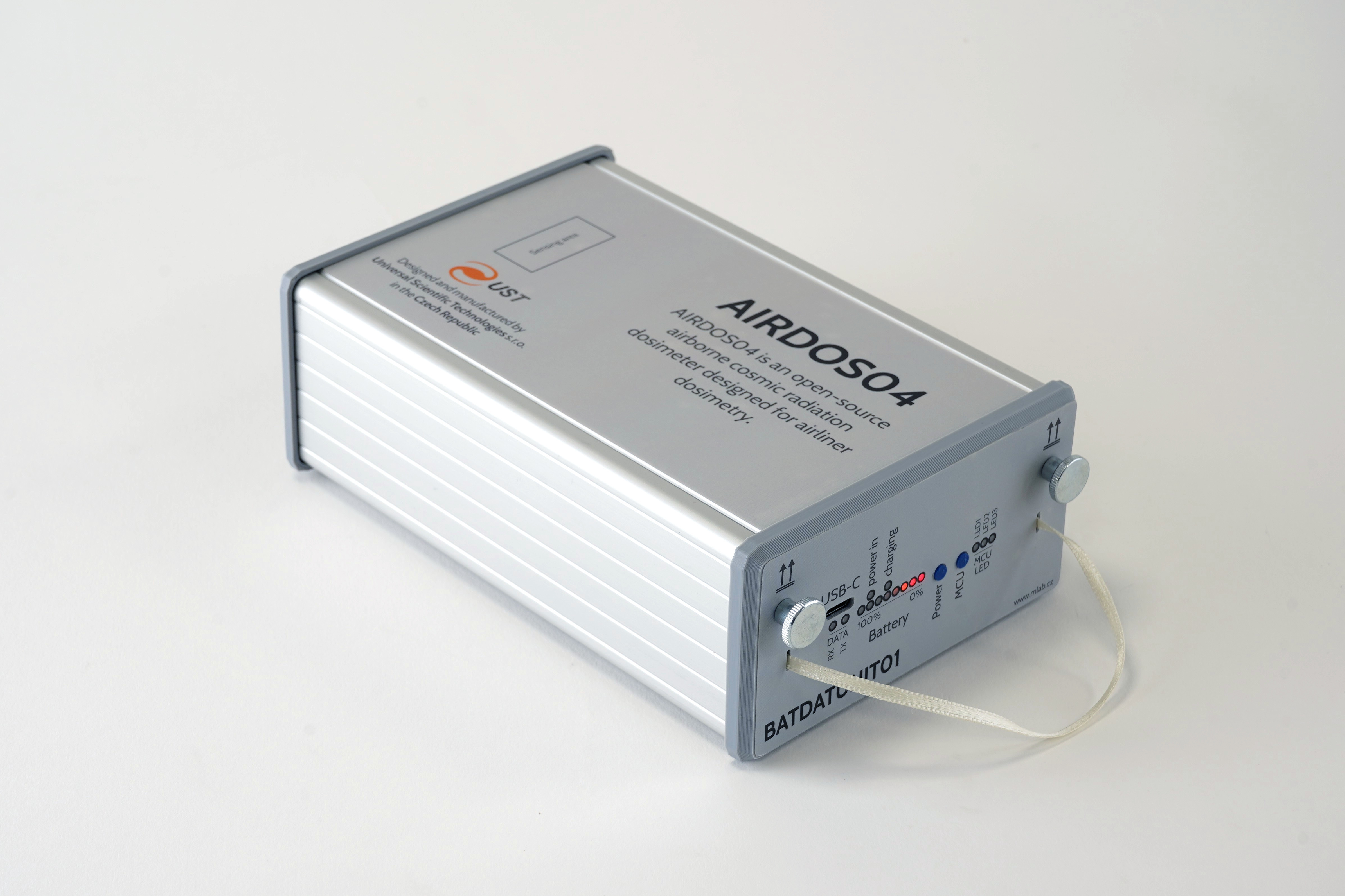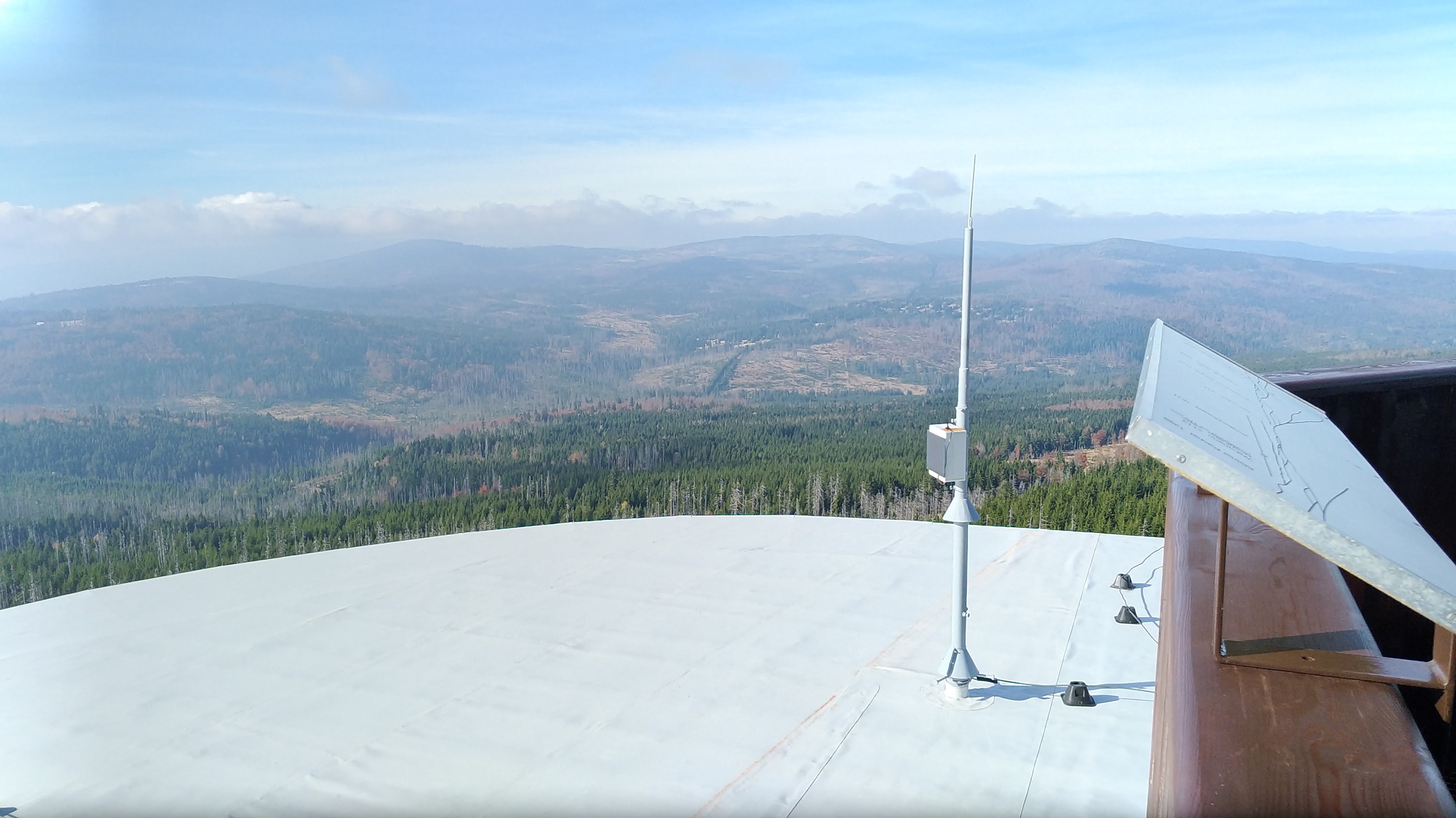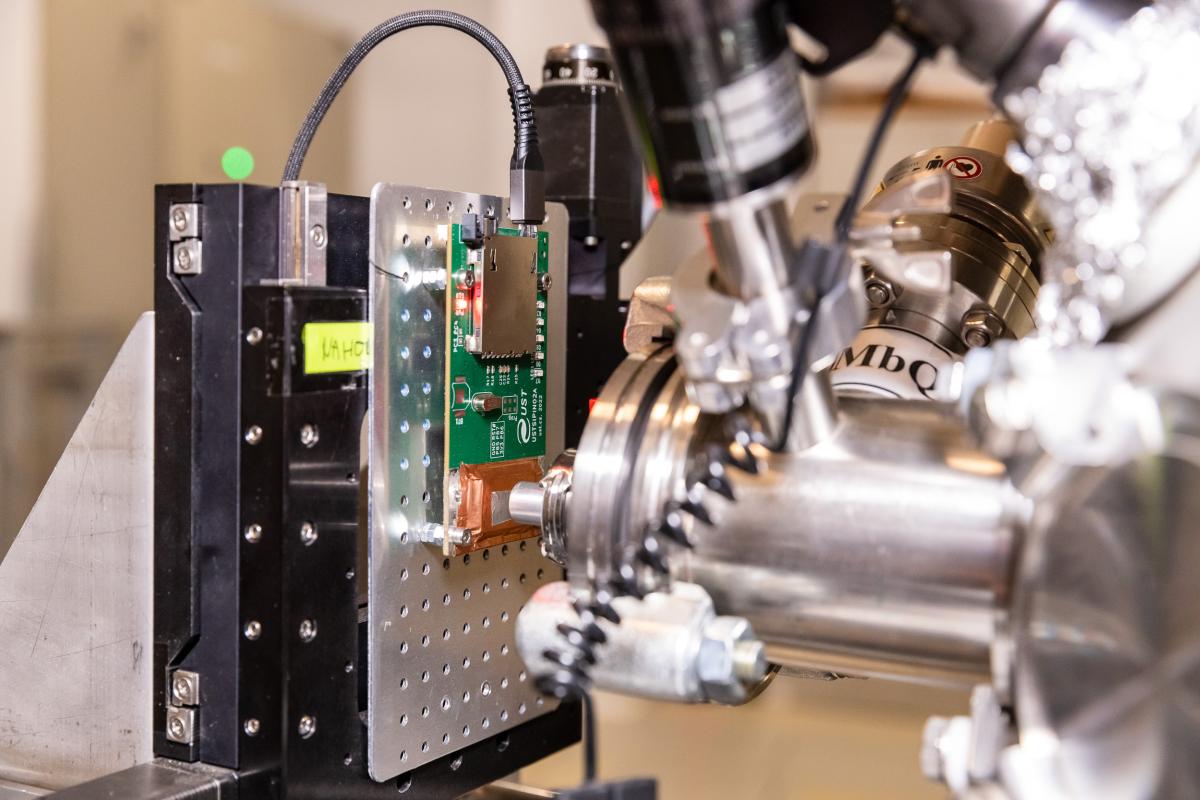UST Radiation Detectors Overview
Our detectors are primarily focused on the detection of cosmic radiation, which represents a mixed radiation field generated by secondary cosmic rays. Thanks to our special semiconductor technology with high sensitivity to charged particles, combined with low weight and low power consumption, UST detectors excel in this area. The detectors have multiple series depending on expected use cases.
AIRDOS: In-Flight Ionizing Radiation Monitoring

AIRDOS is designed to measure ionizing radiation at flight altitudes aboard aircraft. It must detect mixed radiation fields, and to save energy and weight is realized with a semiconductor detector. It places significant demands on low power consumption since it could lack an external power source. High reliability is crucial as it operates independently on board an aircraft and ensures it does not expose the aircraft to a hazard. The service interval is around one month, with shorter servicing time compared to the aircraft itself preparation for flight, involving memory media and energy source replacement, to maintain continuous measurements within a single calibrated instrument on one aircraft.
GEODOS: Ground-Based Radiation Detection

GEODOS is suitable for ground-based applications, both mobile and stationary. Unlike other UST detectors, GEODOS does not rely purely on measuring deposited energy in a semiconductor. Instead, it uses a semiconductor photomultiplier coupled with a scintillation crystal, which provides sensitivity to radiation at the Earth’s surface. This approach has higher power consumption than direct semiconductor detection, and therefore GEODOS is typically powered by photovoltaic panels or another form of external power. High reliability is essential as it operates as a standalone device without supervision, with a service interval of approximately six months, primarily for memory media replacement.
SPACEDOS: Spaceborne Radiation Dosimetry

SPACEDOS is intended for measuring ionizing radiation in space conditions, with extreme mixed field energy values, typically in lower particle fluence than AIRDOS. It comes in two variants: for piloted and unpiloted missions, primarily differing in user interfaces or data access interfaces. The variant for piloted missions functions as a standard passive dosimeter that can be placed either statically or dynamically on a cosmonaut’s body. The variant for unpiloted missions is firmly integrated into the system it operates within, such as a satellite or spacecraft. It requires low power consumption due to energy and cooling constraints in a vacuum environment. High safety and reliability are essential, similar to AIRDOS. Energy sources include onboard power for unpiloted flights or chemical cells (primary cells/accumulators) for piloted flights. The service interval is the duration of one mission, roughly around six months for the ISS, or longer, with no maintenance required until the next service window.
LABDOS: Experimental Radiation Detection instrument

LABDOS is an experimental device that can theoretically be used in all the aforementioned applications. But due to limitations of the universal design, its primary purpose is to design and verify experiments before employing more specific instruments mentioned above. It serves as a testbed for new technologies, currently using a semiconductor diode as a detector, with potential future expansion to include scintillation detectors. High reliability is not a requirement because it is primarily operated under direct user supervision. There are also no high demands for power consumption or power supply, as it is expected to be powered by a mobile source (tablet, smartphone, computer, or power bank) via USB-C.